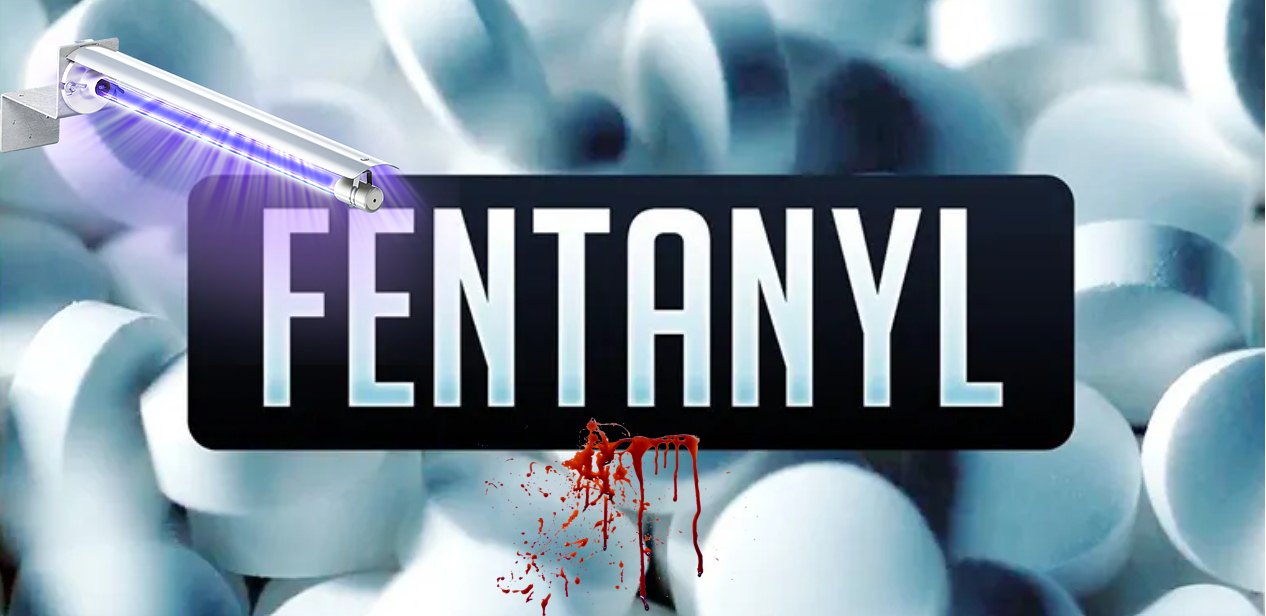Leveraging UV for Safer Fentanyl Seizures and Equipment Sterilization in Law Enforcement
Fentanyl is a synthetic opioid that is up to 100 times stronger than morphine. It is a highly addictive drug that can be deadly in even small doses. Drug deaths nationwide in the U.S. alone hit a new record in 2022. 109,680 people have tragically died in the U.S., and 30,000+ people have died from opioid-related overdoses in Canada, as the fentanyl crisis continues to deepen, according to preliminary data released by the Centers for Disease Control and Prevention, and The Lancet [1] [3]. Fentanyl is often used as a cutting agent in illegal drugs like Cocaine, Heroin, and Methamphetamines. This makes it a serious hazard for law enforcement officers who may come into contact with it during drug busts or other investigations. The risk of exposure to fentanyl is a serious concern for law enforcement officers. Exposure to traumatic events, including those involving powerful and dangerous substances like fentanyl, can lead to various mental health issues among police officers, such as panic attacks and post-traumatic stress disorder (PTSD) [4]. In order to protect themselves both physically and mentally, officers need to take steps to avoid contact with the drug. This includes wearing personal protective equipment (PPE), such as gloves and masks, and being careful not to touch any surfaces that may be contaminated with fentanyl. In addition to PPE, law enforcement officers can also use UV-C light to help improve safety protocols. Ultraviolet, or ‘UV-C’ light has a germicidal effect, meaning it can kill bacteria and viruses with up to 99.9998% efficacy. It is also effective at killing fentanyl. This makes it a valuable tool for decontaminating surfaces that may be contaminated with fentanyl.
Hundreds of pounds of fentanyl and methamphetamine seized by Customs and Border Protection officers at the Nogales port of entry in Arizona. (Mamta Popat/AP)
The Fentanyl Menace and Its Unique Challenges
Fentanyl's potency, which can be up to 50 times stronger than heroin, has contributed to an escalating public health crisis, particularly in the U.S. and Canada. Currently, China and India remain the primary source of fentanyl and fentanyl-related substances trafficked through international mail and express consignment operations environment, as well as the main source for all fentanyl-related substances trafficked into the United States and Canada. DEA reporting continues to indicate the Sinaloa and the New Generation Jalisco (Cártel de Jalisco Nueva Generación or CJNG) cartels are likely the primary trafficking groups responsible for smuggling fentanyl into the United States from Mexico [5]. Law enforcement officers are faced with the daunting task of safely handling and managing substances that pose significant risks not only to those who use them but also to those who come into contact with them during investigations, arrests, and evidence handling. The use of UV-C light to destroy fentanyl has been studied by the Environmental Protection Agency (EPA). In a 2018 study, the EPA found that fentanyl is degraded by UV exposure [2].
Materials and Methods from the EPA’s UV-C Fentanyl Study
Irradiation of samples was conducted at constant exposure 254 nm emanating from a UV light mounted in a dark chamber for up to four days. Glass fiber filters were spiked with 10 μg (dissolved in 100 μl methanol) fentanyl citrate. Triplicate samples were removed from the irradiation box and extracted with acetonitrile containing 1% formic acid on days 1, 2, 3, and 4. Extracted samples were analyzed by LC-MS. An extraction control and a non-irradiated control were included in the study. The radiant flux within the chamber was measured with an irradiance meter. The temperature in the chamber was monitored with a digital thermometer. The absorbance of fentanyl in a methanol solution was determined with UV-VIS spectroscopy in the spectral range of 200-800 nm. Outdoor irradiation was measured with the UVC light meter in June 2017 in the morning and afternoon. On both occasions, six 10 minute measurements were taken each and averaged for a 60 min time frame. [2]
Figure 1. UV-VIS spectrum of 0.1 mg fentanyl citrate in methanol between 200 and 800 nm. Three absorbance peaks are visible at 205 nm, 220 nm and 258 nm, respectively. [2]
Figure 2. Amount of fentanyl on filter paper is reduced by irradiation at 254 nm and a temperature of 40 °C over the course of 4 days. Dark controls held at 25 °C did not show a reduction in the amount of fentanyl after 4 days. The fentanyl concentration between individual days was tested by ANOVA. [2]
Table 1 : Irradiance regimen for fentanyl-spiked filters and equivalent exposure days in a 10 hour daylight equivalent. [2]
Results of EPA Fentanyl UV-C Study
Three absorbance peaks for 0.1 mg/ml fentanyl in methanol were visible at 205 nm, 220 nm, and 258 nm measured with a UV-VIS spectrophotometer indicating that fentanyl strongly absorbs in the UV part of the sunlight spectrum (Fig1). Fentanyl irradiated on filters for 1 to 4 days with 254 nm UV light exhibited an exponential decay (Fig. 2). The extraction efficiency for extracting fentanyl from filters was 83%. At day four 3% of the original concentration was left on the filters. During the first day of irradiation, the temperature within the exposure chamber increased to 42 °C and stayed constant at that temperature throughout the study. Subsequent exposure of filters spiked with fentanyl and incubated at 42 °C (without irradiation) showed degradation by temperature alone on day 4 with 28% fentanyl remaining on filters. Controls stored at room temperature in the dark did not show any degradation of fentanyl applied to the glass filters. The strong absorbance peak at 258 is close to the irradiation wavelength of 254 nm. Therefore, it is plausible that absorbance at this wavelength contributed to the photolytic degradation of fentanyl during irradiation with UV light. The average outdoor irradiance in June for an average 10 h sunlight day was computed by assuming 5 h of low intensity (morning measurement) and 5 h of high intensity (afternoon measurement) sunlight. The day average was then used to compute 10 h outdoor day equivalents corresponding to the cumulative irradiance in the laboratory study (Table 1). [2]
Surface Disinfection in Law Enforcement
In the realm of surface disinfection in law enforcement, safety is paramount, not only for officers but also for the communities they serve. Many government institutions are unaware that UV-C surface disinfection devices that resemble small microwaves (in appearance only) are available to sterilize high-touch items used in police work and law enforcement. The emergence of UV-C technology as a potent disinfection tool offers a novel approach to enhancing safety measures, particularly concerning items such as guns, handcuffs, smartphones/tablets, and any other high-touch items like watches, jewelry, and keys that can become vectors for virus transmission to officers if they are not regularly disinfected.
Understanding UV-C Technology UV-C, a subset of ultraviolet light, has gained recognition for its ability to deactivate pathogens by disrupting their DNA and RNA [5]. This germicidal property makes UV-C an ideal solution for sterilizing various high-touch items in law enforcement, minimizing the risk of contamination for officers.
UV-C and Law Enforcement In law enforcement, high-touch items like guns and handcuffs play a pivotal role in operations. These items frequently change hands and can potentially harbor harmful pathogens, including viruses and bacteria, leading to illness and truancy. UV-C disinfection can be seamlessly integrated into daily routines, ensuring that these items remain sanitized between uses.
Advantages for Law Enforcement
Officer Safety: Sterilizing items like handcuffs and guns with UV-C can protect officers from unintended exposure to pathogens.
Contaminant Prevention: UV-C disinfection prevents the transfer of contaminants between officers, suspects, and evidence.
Community Well-being: By minimizing the risk of contamination, law enforcement agencies can contribute to the health and safety of the community at large.
Overall, UV-C light is a safe and effective way to decontaminate high-touch items as well as surfaces contaminated with fentanyl. It can help to create safer protocols for law enforcement officers and protect their mental health and physical safety. The studies we outlined in this post showcase that UV-C light is the most promising technology for decontaminating surfaces contaminated with fentanyl. It is a safe, effective, and fast-acting way to destroy this dangerous drug. Beyond decontaminating surfaces contaminated with fentanyl, UV-C is also the most promising means of sterilizing high-touch items used in law enforcement. UV-C light has the potential to significantly improve safety levels for law enforcement, and greater investment in disinfection technology is needed to ensure the safety and well-being of law enforcement workers.
- Steven Grabenheimer
References
[1] CDC: Provisional Drug Overdose Death Counts https://www.cdc.gov/nchs/nvss/vsrr/drug-overdose-data.htm
[2] The U.S. Environmental Protection Agency (EPA): https://www.epa.gov/sites/default/files/2018-11/documents/decon_poster_099.pdf
[3] The Lancet: https://www.thelancet.com/journals/lanam/article/PIIS2667-193X(23)00011-X/fulltext
[4] NCBI: https://www.ncbi.nlm.nih.gov/pmc/articles/PMC7492952/
[5] American Chemical Society - A Critical Review on Ultraviolet Disinfection Systems against COVID-19 Outbreak: Applicability, Validation, and Safety Considerations https://pubs.acs.org/doi/10.1021/acsphotonics.0c01245








